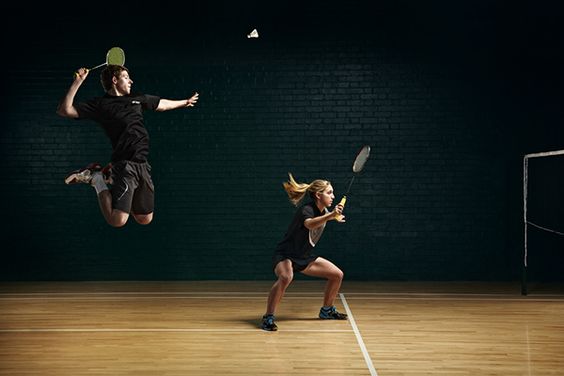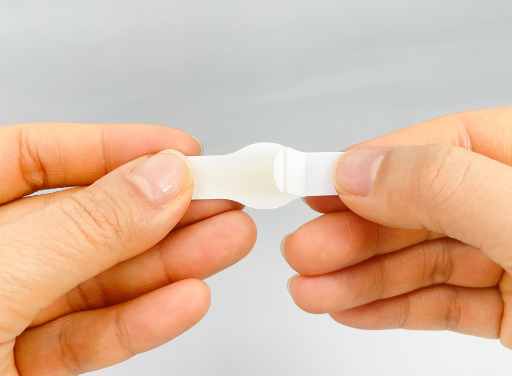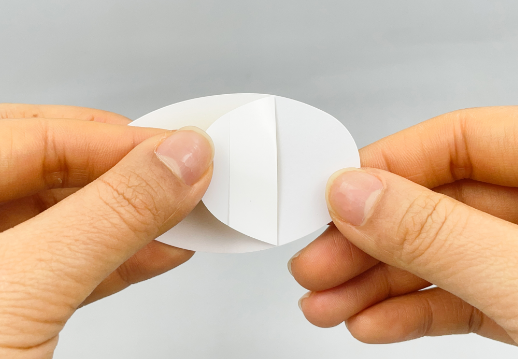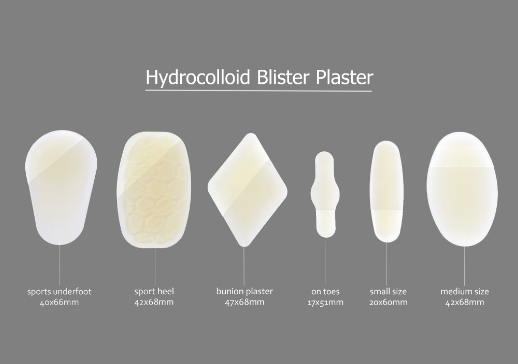Those who love badminton should have experienced blisters on the soles of their feet. Although the blisters are not big, they will affect take-off if they hurt, and it will also cause athletes to be unable to train normally. The impact can be even greater if the blister becomes infected. In order to prevent such a situation from happening, the editor has sorted out some methods, follow me to take a look below.
Why do blisters appear when playing badminton?
Badminton is a kind of racket-like sport with high intensity. When the soles of the feet are exerted and rubbed for a long time when taking off and kicking the ground, the skin of the soles of the feet will soften, which will promote the leakage of local tissue fluid and form foot blisters. The blister is in the gap formed by the separation of the epidermis and the subcutaneous tissue. Its surface layer is the outer layer of the skin, and the inner layer of the blister is the subcutaneous tissue. The blister will be visibly red and swollen due to prolonged friction, and squeezing it will also be accompanied by tingling and severe pain. Although the blisters are small, they have a great impact on sports. Training or competition lasts at least 20 to 30 minutes. Athletes need to run and jump on the field all the time. The friction time between the feet and the ground is long and the friction force is large. In addition, they sweat continuously during exercise, their feet are wet, and the temperature of the soles is relatively high. High, the keratinized layer of the plantar epidermis is thick, it is softened by sweat and then subjected to constant friction, causing a high probability of separation of the epidermis from the subcutaneous tissue.
prevent plantar blisters?
1. Choose a pair of suitable shoes. Blisters are directly related to shoes. If the shoes are too tight, the soles of the feet will be squeezed when surfing the net and starting; if the shoes are too loose, there will be more opportunities for friction between the feet and the shoes during exercise. Shoes that are too tight or too loose can cause blisters on the soles of the feet. Therefore, it is very important to wear a pair of suitable sports shoes to reduce the chance of friction on the feet during exercise.
2. If your feet often get blisters, you can put blister plaster on the parts that are prone to blisters before playing to reduce the friction between the foot skin, shoes, and the ground, and the blister plaster is made of a hydrocolloid material. It is soft and comfortable to use and has an ultra-thin design and self-adhesive properties, which can give enough comfort during exercise.
3. Change socks frequently to keep feet dry and reduce friction between feet and shoes, so as to avoid blisters.
4. Soak your feet with warm water every night before going to bed to promote local blood circulation. After running, you can apply an appropriate amount of Vaseline to help moisturize the skin.
5. It is best to prepare two pairs of sports shoes that fit your feet and replace each other. Different shoes are worn on the feet, and the contact parts and pressure are always different, which can reduce discomfort and reduce the chance of blisters.
What to do with blisters?

Once a blister has formed, it is important to prevent the blister from expanding and prevent infection. Generally, blisters with a diameter of less than 5 mm can be absorbed by themselves after a few days. Do not break the skin of the blisters at this time, as breaking the blisters will not only make the pain worse but also cause infection. If you still need to continue training, you can put blister plaster on the local area, and disinfect it in time after training to prevent infection. Blisters with a diameter of more than 5 mm are often painful and affect training. At this time, the fluid accumulated in the affected area can be drained to relieve the pressure caused by the blisters. The method is: first disinfect the affected area with iodine, then use a sterilized needle to pierce a small hole at the edge of the blister, then gently squeeze out all the liquid in the blister; finally, use blister plaster to stick to the wound, it can Providing the wound with a slightly acidic space is conducive to wound healing and can prevent the invasion of foreign microorganisms. It should be noted that it is better not to cut off the foam skin, which is more conducive to wound healing.
For more information on Innomed® Hydrocolloid Blister Plaster, refer to the previous articles. If you have customized needs, you are welcome to contact us; we will serve you wholeheartedly.
At Longterm Medical, we transform this data by innovating and developing products that make life easier for those who need loving care.
Editor: kiki Jia
Date: February 20, 2023

 English
English عربى
عربى Español
Español русский
русский 中文简体
中文简体








